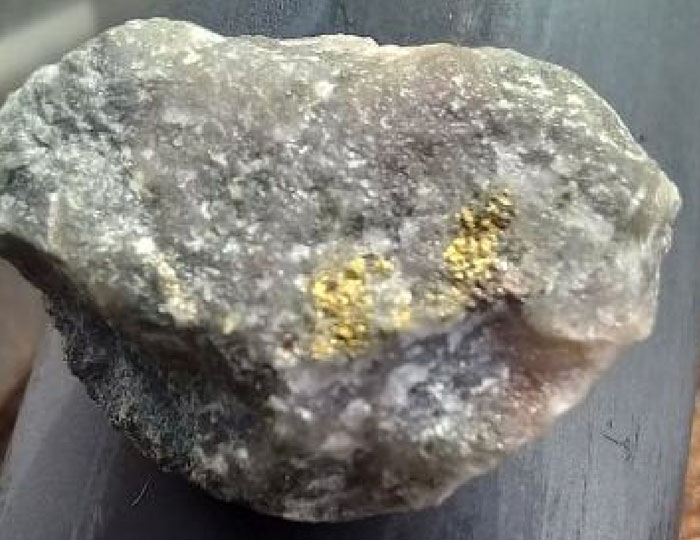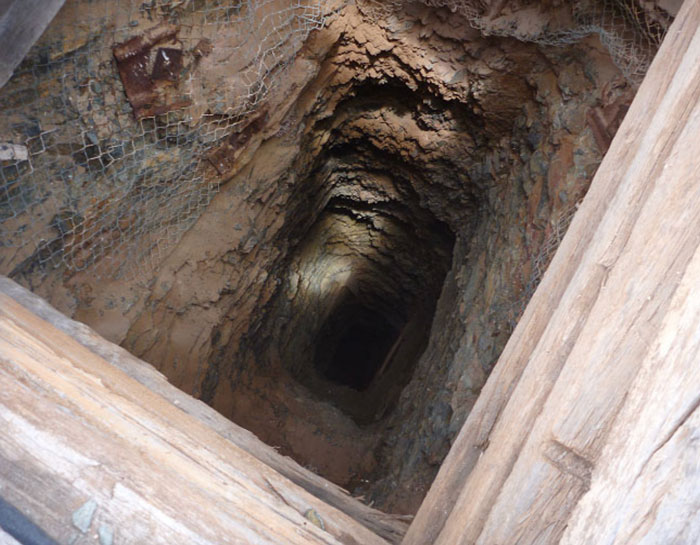Richard Poole says REZ found its next mine with the discovery of shallow, high-grade gold in Western Australia

Pic: Getty
Discovery of High-Grade Gold in REZ’s own backyard
REZ has far from exhausted the high-grade gold potential at its East Menzies project in Western Australia, with the discovery of a new high-grade lode gold system just 2.5km south of Granny Venn, where the company is already mining, says Executive Director Richard Poole.
Resources & Energy Group (ASX:REZ) has reported a peak hit of 1m at 33.75 grams per tonne (g/t) gold from just 37m at the Maranoa prospect following a four-hole drilling program in December.
This high-grade hit came from a broader intercept of 3m at 11.7g/t from 36m. Other notable hits included 1m at 1.03g/t from 107m and 1m at 5.16g/t from 110m.
Executive Director Richard Poole on the recent gold finding
REZ drilled the four holes at Maranoa to take advantage of equipment and resources that were still on site after it had completed the drilling program at the Springfield prospect in late December.
The Maranoa prospect already has a mining licence and forms part of REZ’s strategy to identify and commercialise low capex development opportunities positioned along the western side of the East Menzies project area.
Executive director Richard Poole said this could be REZ’s next mine after it has finished mining Granny Venn, with high-grade visible gold present.

REZ has so far completed two mining campaigns at the Granny Venn deposit 2.5km to the north of the Maranoa prospect and is working to lock in a date for a third campaign to generate early cash flow to fund further exploration at East Menzies.
Maranoa currently has a JORC-compliant inferred resource of 46,000 tonnes at 5.7g/t for about 8,000 ounces of contained gold.
What is a High Grade Gold Deposit?
The definition of high grade depends on whether or not it contains pure 24 karat gold. Generally speaking, the World Mining Council considers anything between eight and 10 grams of gold per tonne to be high grade. However, this value can vary wildly. Currently, there is no precise definition for what is a high grade. A good rule of thumb is about one hundred metres of good grade.
A high-grade gold deposit usually has more than one type of precious metal. The deposits are almost always narrow and are often in the form of narrow seams. A reasonable threshold is 6 grams of gold, platinum and palladium per tonne over two metres. The value of each metal is measured in dollars per tonne and should be interpreted in this way. Once the metal is worth more than two times the cost of mining it, a deposit is considered profitable.
A gold deposit is considered high grade when it contains six grams of gold and two grams of platinum per tonne. The higher the grade, the more valuable the deposit is. Moreover, a high grade is more economic to mine. But, it’s important to remember that not all deposits are high-grade. In order to determine whether a mine is high-grade, you must look at the amount of gold per tonne.
Executive director Richard Poole said resource modelling suggests potential for small-scale, high-grade open cut operations.
“These resources present an opportunity for extending mining activities at East Menzies, which are presently focused on the Granny Venn cutback,” he said.
“The drilling activities at Maranoa to date (past and present) have principally been directed at shallow open cut mineralisation. On a broader canvas, the resource at depths below 100m has not been tested and is considered open to the south.”
Maranoa is one of many northeast-trending mineralised quartz veins, which are conspicuously displayed by lines of old gold reef workings along the east limb of the Goodenough Syncline.

The extent of existing workings, surface outcrop and drilling investigations indicates that the Maranoa lode system has a strike length on surface of between 300 and 500m.
Maranoa was mined between 1899 and 1942, producing 9,465 tonnes at a gold grade of 27g/t for 8,510 contained ounces.
In 1979, the mine was dewatered by Queen Margaret Mines and the underground workings above the 200-foot level were examined where possible.
In 1985, the Callion joint venture under agreement with QMM drilled 42 reverse circulation holes in the vicinity of the workings. This work was the basis of a non-JORC resource estimate, which did not proceed to development.
Since that time there has been no further systematic evaluation of the prospect until REZ picked it up in late 2018.
REZ said the results of this most recent drilling will be used to update the resource model for conceptual mine design and further exploration planning.
This article was developed in collaboration with Resources & Energy Group, a Stockhead advertiser at the time of publishing.
This article does not constitute financial product advice. You should consider obtaining independent advice before making any financial decisions.
Related Topics

UNLOCK INSIGHTS
Discover the untold stories of emerging ASX stocks.
Daily news and expert analysis, it's free to subscribe.
By proceeding, you confirm you understand that we handle personal information in accordance with our Privacy Policy.








